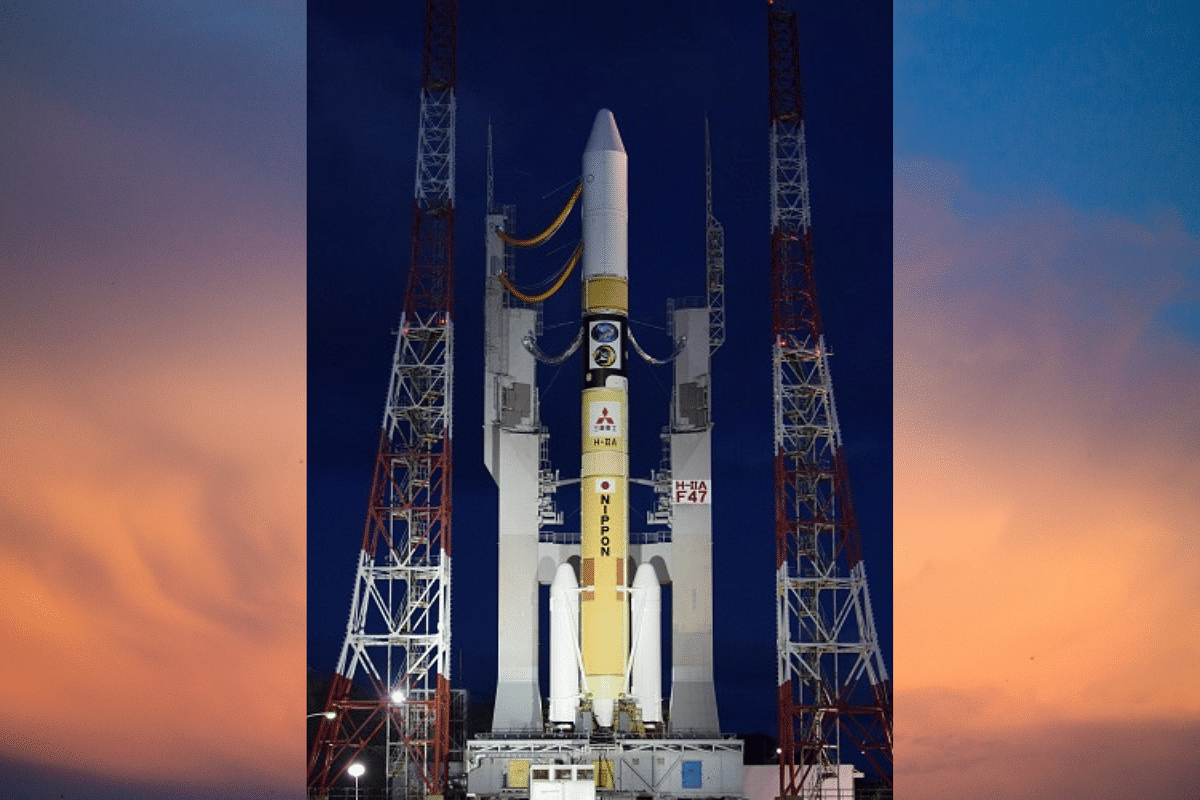Science
Japan Shoots For The Moon After India; SLIM-XRISM Dual Mission Will Explore The Moon, Study Celestial Phenomena

Japan's H-IIA F47 rocket at the launch pad. (MHI Launch Services/X)
Update: The launch scheduled for 28 August 2023 was "postponed due to the fact that the upper winds did not meet the launch conditions." The new launch date and time are yet to be announced.
Japan is preparing to launch two exciting missions related to lunar and space science in one shot, using a single rocket.
The Japanese Aerospace Exploration Agency (JAXA) will send the Smart Lander for Investigating Moon, or SLIM, to the Moon. SLIM's main objective is to demonstrate accurate lunar landing techniques.
Additionally, JAXA will place the X-Ray Imaging and Spectroscopy Mission (XRISM) in low-Earth orbit to study extreme celestial phenomena.
The launch of the H-IIA rocket carrying SLIM and XRISM is scheduled for 5.56 am on 28 August, India time.
SLIM, also known as "Moon Sniper" in Japanese, will take its time to reach the Moon. It is expected to arrive in lunar orbit approximately three to four months after the launch.
Following a month or so in orbit, the spacecraft will make a 20-minute dash to the lunar surface, aiming to land within 100 metres of its intended target.
This precision landing is crucial, as traditional landers have an accuracy of several kilometres.
Due to bad weather at Japan's Tanegashima Space Center, the launch of SLIM was postponed by a day. The launch window will remain open until 15 September.
SLIM is planned to touch down on the slope of Shioli Crater, a recently formed impact feature measuring about 300 metres in diameter. This crater is located at 13 degrees south latitude and 25 degrees east longitude on the near side of the Moon.
At the time of launch, SLIM will have a total weight of 590 kilograms, with the majority of this weight being fuel. Notably, it will use five crushable, 3D-printed semi-circular aluminum lattice legs to absorb the impact of landing and achieve a successful landing on a sloped surface.
If the mission is successful, Japan will join the ranks of just five countries that have achieved a soft landing on the Moon.
The Japanese launch follows closely on the heels of India's historic soft landing on the Moon as part of the Chandrayaan-3 mission.
India became the fourth country to accomplish soft landing on the Moon and the first to do in the south pole region.
The main objectives of the Japanese mission are to showcase precise ("pinpoint") landing capabilities and to develop lightweight systems for more cost-effective exploration of the solar system.
Additionally, the mission will carry scientific instruments including a multiband camera to analyse the local mineralogical environment, with a specific focus on olivine, a mineral that may have originated in the Moon's mantle.
The mission will also include a small laser retroreflector array.
XRISM is a joint effort between the National Aeronautics and Space Administration (NASA), JAXA, and the European Space Agency (ESA). Its primary goal is to observe X-rays emitted by extreme phenomena such as hot gas clouds surrounding galaxies and emissions from black holes.
Equipped with a wide-field X-ray imager and a cryogenic high-resolution X-ray spectrometre, the spacecraft will collect valuable data that will aid scientists in studying the evolution of the universe.
XRISM is set to perform tasks that were initially planned for Hitomi, Japan's X-Ray astronomy probe. Unfortunately, Hitomi was lost due to attitude control issues shortly after its launch in February 2016.
To conduct its observations, the XRISM observatory will be positioned in orbit approximately 550 kilometres above Earth. It is expected to survey the skies for a period of three years, until the cooling helium tanks, which maintain its operational temperature at -273.10 degrees Celsius, are depleted.
However, there is a possibility of extending the mission through the use of mechanical cooling.
(Originally published: 27 August 2023, 10.27 pm)
Support Swarajya's 50 Ground Reports Project & Sponsor A Story
Every general election Swarajya does a 50 ground reports project.
Aimed only at serious readers and those who appreciate the nuances of political undercurrents, the project provides a sense of India's electoral landscape. As you know, these reports are produced after considerable investment of travel, time and effort on the ground.
This time too we've kicked off the project in style and have covered over 30 constituencies already. If you're someone who appreciates such work and have enjoyed our coverage please consider sponsoring a ground report for just Rs 2999 to Rs 19,999 - it goes a long way in helping us produce more quality reportage.
You can also back this project by becoming a subscriber for as little as Rs 999 - so do click on this links and choose a plan that suits you and back us.
Click below to contribute.
Latest